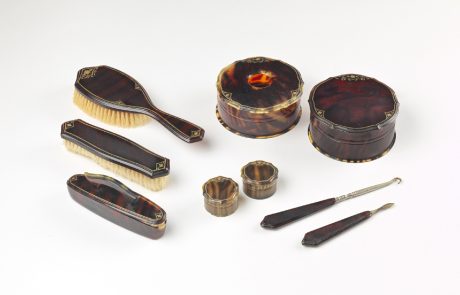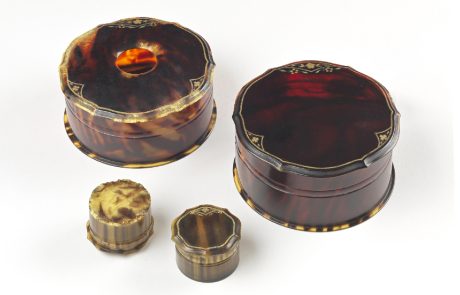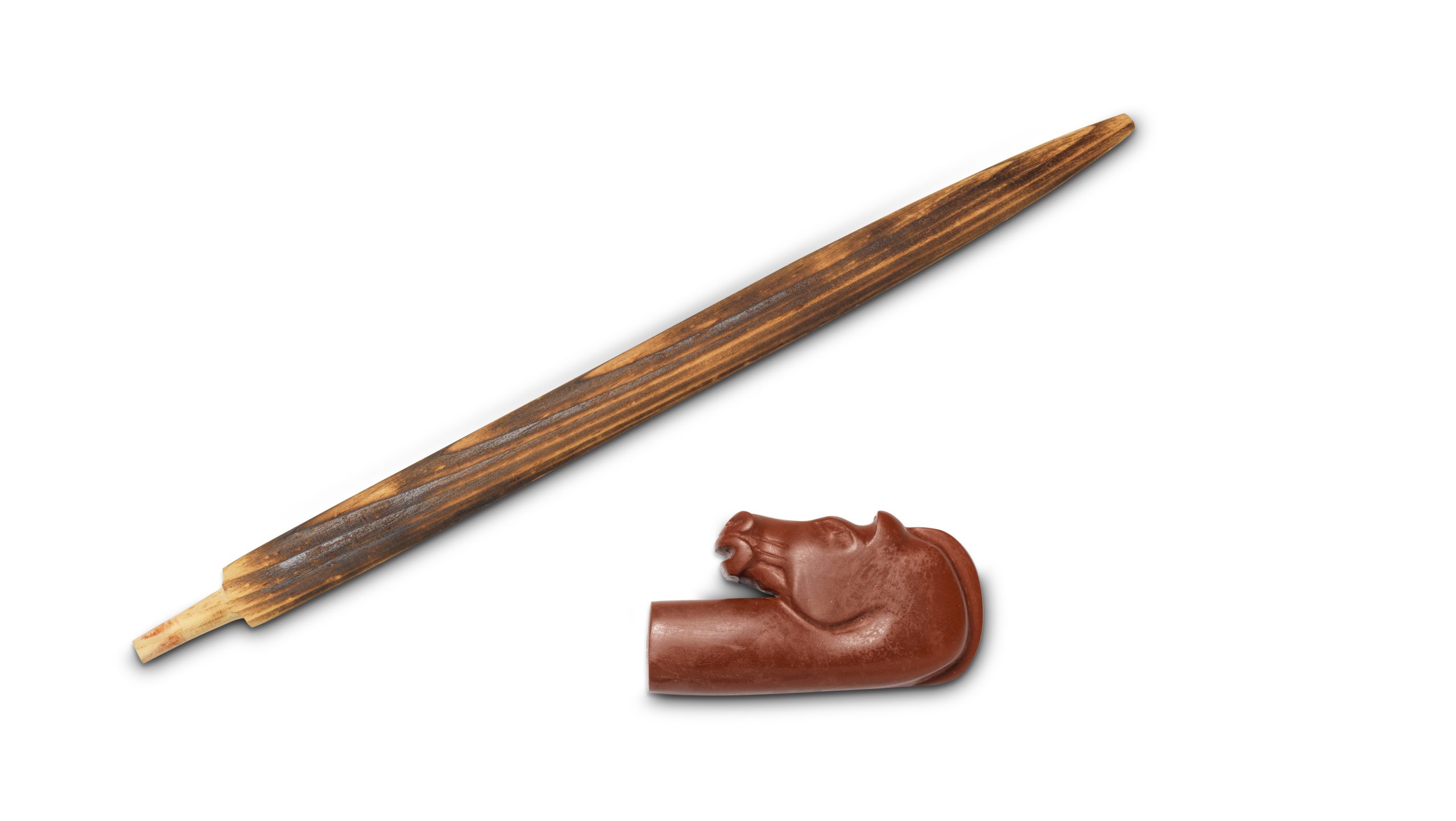Faux Tortoiseshell Containers
Faux Tortoiseshell Containers, ca. 1900–1920
Unknown maker
Celluloid (cellulose nitrate), pigments, and brass, small: h. 1 in. (2.5 cm), diam. 1 3/4 in. (4.5 cm) each; large: h. 2 1/4 in. (5.7 cm), diam. 4 1/4 in. (10.8 cm) each
Private collection
These early plastic toiletry items made of cellulose nitrate are examples of what has been termed “inherent vice.” Unassuming as they may appear, they are made of the same unstable material that is used in photographic film and certain explosives. Over time, the reactive nature of the nitrate groups in the polymer has resulted in the formation of nitric acid, causing crazing on the underside of the faux tortoiseshell box and corrosion on the lid’s decorative brass insert. Long-term care for items made of cellulose nitrate is challenging; their reactivity is only curbed at low temperatures, ideally in dry and dark conditions.

Click thumbnail images to view slideshow
See other items in How is Matter Active?








